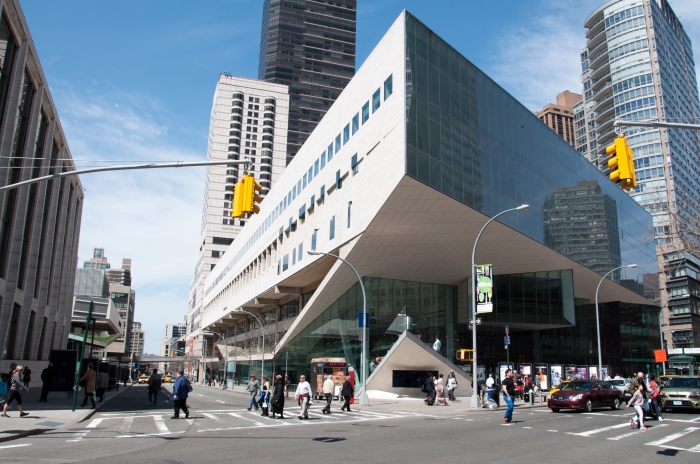I’m intrigued by the shortlist of architectural firms announced today to build London’s new Centre for Music, and the future new home for the London Symphony Orchestra.
It’s no big surprise to see the names of Renzo Piano, Foster and Partners and Gehry Partners associated with a project of this scale and prestige (Rogers Stirk Harbour + Partners, and Studio Libeskind can’t have been far from the cut, I imagine).
So far, so predictable. Speaking as an absolute architectural dilettante, you understand, I’m more interested in what proposals might emerge from the other listed firms – AL_A and Diamond Schmitt Architects, Diller Scofidio + Renfro and Sheppard Robson, and Snøhetta.

Amanda Levete’s AL_A is currently in vogue in London, thanks to her new entrance and gallery for the V&A (she’s also part responsible for the media centre at Lord’s Cricket Ground, perhaps the most improbable object of affection in all the country’s architecture). Canada’s Diamond Schmitt have form in tasteful if not radical performing arts designs, most notably in this context Montreal’s Maison Symphonique, built in 2011. After that hall’s opening concert, its acoustics were described by the New York Times‘s Anthony Tommasini as ‘resonant and clear’ and as having ‘mellowness and warmth’. Arthur Kaptainis, reviewing a performance by the Borodin Quartet a few days later for the Montreal Gazette, noted that the acoustics gave ‘a feeling of intimacy’. However, Tommasini did express reservations, particularly over the missing ‘depth, richness and presence’ of the string sound in Beethoven’s Ninth Symphony, which formed part of the inaugural concert’s programme. In the case of La Maison, the acoustics were handled by Artec Consultants and Sound Space Design, rather than Diamond Schmitt themselves, so who’s to say how much bearing this might have on the London hall. My sense from this partnership (again, architecture dilettante speaking here) is that this may be the safe pair of hands option – La Maison is notable for having been built at a tricky time, economically – but that said, I’m curious as to how Diamond Schmitt’s somewhat blocky, geometric style might marry up with Levete’s swooping curves and bulbs.

New York’s Diller Scofidio + Renfro have built a lot of cultural buildings, but are perhaps best known musically for their re-design of Alice Tully Hall at the Lincoln Center (they also led the $1 billion rejuvenation of the Center as a whole, NYC’s largest building project of the noughties, after the rebuilding of Ground Zero). If you’re looking for a precursor to the London project among the listed firms, this may be closest to it: a new hall for a much-loved institution, within a tight and historically loaded urban environment. (And in Charles Renfro, a former clarinettist, they do have a musician on the team.) Sheppard Robson bring a British presence. Less well known for their cultural buildings than DSR – their portfolio is dominated by office, university and residential buildings, understated but with knacky detailing – they bring plenty of experience working within London, and the City in particular. This team might be a good bet, I’d suggest.

And then Snøhetta, the Norwegian firm responsible for a recent love affair of mine in the form of the sexily sliding Oslo Opera House. The exterior, with its sinking iceberg slope you can walk from fjord’s edge to flytower is the attention grabber, but the interior is no less special – I say without hesitation that the entrance to the loos (contrasting white geometric cladding designed by Olafur Eliasson with a dark metallic interior) is one of the most spectacular I can recall. Wow, I’d love a building this good in London. But then, what really makes it work is where it is: the fjord, the climate, the hills around Oslo: the opera house seems just an expression, a distillation of these. It almost seems to melt into its environment. (For now – major building developments along the Oslo waterfront currently underway look set to dramatically change the feel of the location.) Many of Snøhetta’s buildings – the Hørsholm suburb proposal, the International Centre for Cave Art at Montignac, the Hjerkinn Wild Reindeer Pavilion – seem designed to lie close to their environment, articulating a fine line between the built and the wild. Edges are important; lots of buildings are on waterfronts. The heart of the City of London doesn’t seem like natural Snøhetta territory, where the building will have to make an entirely different set of agreements with its surroundings, but who knows? Snøhetta are clearly not short of ideas, and may relish the challenge.
One thought on “So who is on that shortlist to build the LSO’s new home?”